

SOFIA - Circ 1182 - Excerpt - Florida Everglades. The Everglades ecosystem includes Lake Okeechobee and its tributary areas, as well as the roughly 40- to 50-mile-wide, 130-mile-long wetland mosaic that once extended continuously from Lake Okeechobee to the southern tip of the Florida peninsula at Florida Bay.
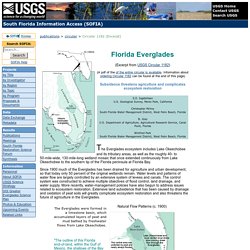
Since 1900 much of the Everglades has been drained for agriculture and urban development, so that today only 50 percent of the original wetlands remain. Water levels and patterns of water flow are largely controlled by an extensive system of levees and canals. The control system was constructed to achieve multiple objectives of flood control, land drainage, and water supply. More recently, water-management policies have also begun to address issues related to ecosystem restoration. Extensive land subsidence that has been caused by drainage and oxidation of peat soils will greatly complicate ecosystem restoration and also threatens the future of agriculture in the Everglades.
Historic Flows Were Severed. 2011 Excellence in Environmental Engineering and Science Competition Winners. 2011 Excellence in Environmental Engineering and Science™ Competition Winner Grand Prize - Environmental Sustainability Entrant: CH2M HillEngineer in Charge: Wayne D.
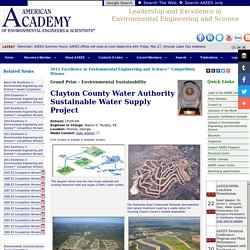
Murphy, P.E.Location: Morrow, GeorgiaMedia Contact: Jodie Willson Click images to enlarge in separate window. 2011 SAB Awards Winning Project - Shepard Environmental Education Centre. Located on the outskirts of Calgary, the Shepard wetland is part of a 227ha storm water management initiative to improve the quality of storm water entering the Bow River.
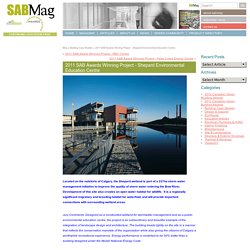
Development of this site also creates an open water habitat for wildlife. It is a regionally significant migratory and breeding habitat for waterfowl, and will provide important connections with surrounding wetland areas. Jury Comments: Designed as a constructed wetland for stormwater management and as a public environmental education centre, the project is an extraordinary and beautiful example of the integration of landscape design and architecture.
The building treads lightly on the site in a manner that reflects the conservation mandate of the organization while also giving the citizens of Calgary a worthwhile recreational experience. Energy performance is modelled to be 50% better than a building designed under the Model National Energy Code. Print this article | Send by e-mail. Oil + Gas - AECOM - A global provider of architecture, design, engineering, and construction services. Large scale constructed wetlands - Google Scholar. WebImagesMore… Sign in Advanced Scholar Search.
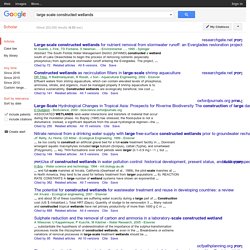
Efficacy of a large-scale constructed wetland to remove phosphorus and suspended solids from Lake Apopka, Florida. St.
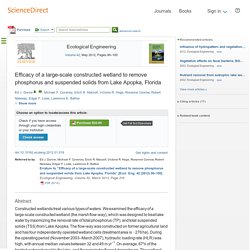
Johns River Water Management District, Department of Water Resources, 4049 Reid Street, Palatka, FL 32177, United States Received 1 November 2010, Revised 9 January 2012, Accepted 31 January 2012, Available online 2 March 2012 Choose an option to locate/access this article: Check if you have access through your login credentials or your institution Check access doi:10.1016/j.ecoleng.2012.01.019 Get rights and content Referred to by.
Dunne12 EcoEng42.90 100 PremovConstrWetlandApopkaFL. Floating Wetlands, Floating Islands, Aqua Biofilter, Biofilter Grows Rice on Fish Pond, Floating Wetlands, Floating Reedbeds, Floating Reed Beds, Floating Islands, Fishery Algae Control, Algae Control, Algal Bloom, Fisheries, Aquaculture, Biofilm. Wetland. Marshes develop along the edges of rivers and lakes.
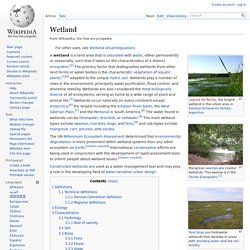
Many species of frogs live in wetlands, while others visit them each year to lay eggs. Snapping turtles are one of the many kinds of turtles found in wetlands The UN Millennium Ecosystem Assessment determined that environmental degradation is more prominent within wetland systems than any other ecosystem on Earth. [citation needed] International conservation efforts are being used in conjunction with the development of rapid assessment tools to inform people about wetland issues.
[citation needed] Blumberg Engineers Ecotechnologies. Dow Helps California Convert Sewage To Drinking Water. Filtered sewage served for decades as a way to irrigate farm fields and golf courses, but getting the public to accept it for drinking and cooking proved to be a tall order.
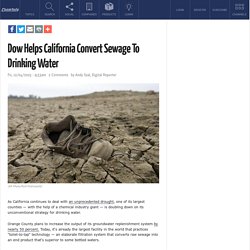
Turning sewage into drinking water gains appeal as drought lingers. It's a technology with the potential to ease California's colossal thirst and insulate millions from the parched whims of Mother Nature, experts say.
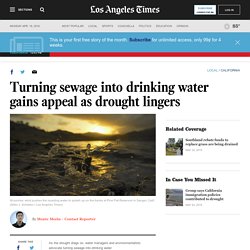
But there's just one problem — the "yuck factor. " Reclaimed water. BioScience. Authors Walter H.
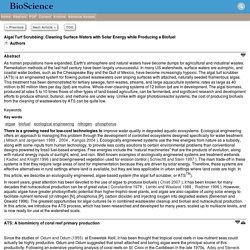
Adey (adeyw@si.edu) is a research scientist in the Department of Botany at the National Museum of Natural History, Smithsonian Institution, in Washington, DC. Patrick C. Kangas is an associate professor in the Environmental Science and Technology Department at the University of Maryland, in College Park, Maryland. Feature: Building Wetlands for Clean Drinking Water – Cool Green Science. Can building wetlands reduce dangerous high nitrate levels and thus provide clean, safe drinking water for thousands of people?
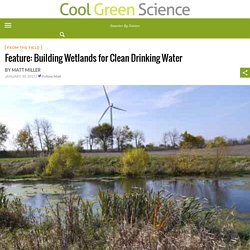
Yes. But, when it comes to ensuring clean water, not all wetlands are created equal. Biologists know how to restore great wetlands to draw in ducks and shorebirds. Restoring wetlands to also help people may require a different approach. That’s the focus of an intensive research effort conducted by Nature Conservancy scientists on the Mackinaw River watershed in central Illinois. Performance Study on the Constructed Wetland for Clarification of Polluted Wu-Luo River Water. J. Environ. Eng. Manage., 18(5), 345-354 (2008) Small Towns Build Artificial Wetlands to Treat Sewage.
SCIENTISTS are helping communities achieve low-cost sewage treatment by designing and building artificial marshes that can clean sewage as well as, or better than, conventional treatment plants while providing other benefits to wildlife and the environment. A number of towns in the Tennessee Valley and in rural Pennsylvania have built wetlands to treat their municipal waste, raising the quality of the water that re-enters streams and reservoirs and improving the aesthetic appearance of sewage plants.
Proponents say the most significant advantage of the wetlands systems is cost. Constructed wetlands design manual – Melbourne Water. The manual outlines our requirements for best practice constructed wetland design. It will support consistent delivery of high quality constructed wetlands across the Port Phillip and Westernport region. The final draft has been prepared based on valuable customer feedback and comments. Guidance note To assist the development industry, we have created a guidance note for interim use of the draft Constructed Wetlands Design Manual. This document should be referred to when designing new constructed wetlands or when updating wetland designs.
Although the design manual is in draft, it has replaced the former Constructed Wetlands Guidelines 2010. This guidance note was requested by the Urban Development Institute of Australia and the Association of Land Development Engineers. Further feedback invited We welcome feedback on the design manual final draft which can be provided in writing to: Evaluation of the Effectiveness of Constructed Wetland on River Quality Improvement. Constructed wetland for water quality improvement: a case study from Taiwan.